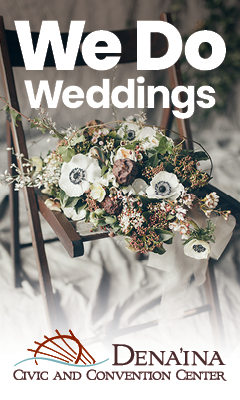
Choosing Wine for Your Wedding
Story by Sarah Gonzales
You don’t have to be a wine expert to know that a fun and fizzy champagne will infuse any celebration with joy, and what celebration is more joyful than your wedding day? But choosing wines for your big day – from bubbles to reds and whites – can be complicated.
Many couples know they want to serve their guests something delicious without running their budget into the ground, but they don’t know where to start.
To help you decide, we’ve turned to the experts for their advice on choosing the right wines as well as some money-saving and stress-reducing tips.
Cater to the Masses
Determining a menu and selecting wines can be one of the best, yet most challenging, parts of wedding planning. Begin your selection process by considering the season in which your wedding will take place; summer events demand lighter, fruitier wines, while winter weddings pair well with spicier, richer reds, for instance. From here, narrow down your possible selections by choosing what pairs best with the meal – whites with chicken and fish, reds with beef. Keep in mind that a wedding is a perfect time to make a personal statement by serving a wine from your first date, or designing a custom label for the wine bottles.
The wedding couple may have unique and specific tastes when it comes to stocking their personal cellar, but keep in mind that a reception crowd will include a wide variety of wine experience – from the novice who knows only red and white, to the advanced oenophile who can tell you what the weather was like in the Loire Valley in 1986. So, in order to please the crowd, “keep it simple and serve what people know,” advises Larissa Wilhelmi, owner of Veritas Wines, an Anchorage-based wholesale distributor of boutique wines. “Cabernet sauvignon or merlot for red. Sauvignon blanc or chardonnay for white.” Know that it’s okay to have an expensive bottle of champagne or more advanced vintages at the head table for the bride and groom’s special enjoyment.
At UnWined, an Anchorage wine boutique selling bottles from small, primarily family-owned wineries manager Amber Wolf recommends that blends such as “a red table wine and a white table wine,” are simple choices that are sure to please a crowd, giving them the option of what they’d like to drink. Having red and a white on hand to offer your guests is generous, but serving a single varietal is also perfectly fine. In that case, “choose a pinot noir,” says Wolf, a versatile red on the lighter end that pairs well with white or red meats.
Couples getting hitched in the 49th state have the option to serve wine made here, a fun way to celebrate a wedding in the Last Frontier. Bill Fry, winemaker and owner of Bear Creek Winery in Homer, comments that his wines are made to pair well with Alaskan seafood, often the main course at local weddings. “If you’re serving fish, the Alaska chardonnay goes really well,” he says of this half-grape/half-rhubarb blend.
How Many and How Much?
To figure out how many bottles to order, consider that part of your guest list will be children, non-drinkers or designated drivers so subtract that amount and calculate from there. A search online for “drink calculator” will turn up dozens of estimation tools, but a good rule of thumb is that there are 6-8 glasses/bottle for sparkling wine and 4-5 glasses/bottle for red or white wines.
“Whether it be wine, beer or mixed drinks, the ratio to use for estimating consumption is two drinks the first hour, then one drink every hour after that,” notes Christine Gire, sales manager and wedding planner at Anchorage Convention Centers. She explains that serving 100 guests during a five-hour reception works out to 600 drinks and to estimate the total cost of your alcohol tab, she says, multiply that number by $6.50, the average cost of a drink from a hosted bar. “So the minimum amount you expect to pay for a hosted bar for 100 guests is $3,900 plus 20 percent” to cover gratuity.
If that’s too much math, or you’re purchasing your own wine to serve at the reception, Fry offers this simple way to figure out how much to have on hand: “Estimate a third of a bottle per person for lunch and half of a bottle per person for dinner.” And remember that you’ll want to serve less wine if you are planning to serve beer or liquor, too.
Check with the liquor store where you place your wedding order to find out if they have a return policy on unopened bottles so you don’t get stuck with multiple cases of the same wine after the party ends, that is unless you really like it.
Finally, you don’t have to wait to toast your nuptials! Narrowing down the final selection of what to decant can make for a spirited pre-wedding event. “Why not have your bridal shower be about picking wines?” suggests Wilhelmi. “It could be a lot of fun!” Choose three reds, three whites and two sparkling wines and do a blind “brown bag” tasting, she says, to find out which wine is the most popular pick with the crowd, ensuring that you’ll have winning wines come your wedding day.
|
Red |
White |
Bubbly |
|
|
Amber Wolf, manager, UnWined |
Townshend Cellar Red Table Wine, Washington, $13 |
Townshend Cellar White Table Wine, Washington, $13 |
Champagne Perrier-Jouët, France, $50 |
|
Larissa Wilhelmi, |
Any bottle from Camaraderie Cellars, Washington, $22 |
Elizabeth Spencer Sauvignon Blanc, California, $19 |
Tres Donne Moscato d'Asti, Italy, $21 |
|
Bill Fry, |
Bear Creek Raspberry Rossa, $26 |
Bear Creek Alaskan Chardonnay, $18 |
Bear Creek will carbonate any of their white wines for local functions. |
4 Things to Consider when Choosing Wedding Wines
Beyond red, white or bubbly, these factors figure heavily into choosing wines for your wedding:
1) The location. Does your rented venue allow you to bring in your own bottles? Will you need a catering permit or licensed servers to pour? Are cabs available from the location, or can you arrange for a shuttle so guests can enjoy themselves? Is there a specific time when the party must end?
2) The style of reception. “Butler passing” or serving glasses from trays looks elegant at a formal event while self-serve works at a more casual, backyard function. A seated dinner might have servers pour, while buffet-style usually sees bottles on the table.
3) The cost. Will you buy all the drinks, or just host the first couple of hours then have guests purchase their own? (Note: If you are paying servers to pour, be sure to factor in a 20-percent gratuity and don’t expect guests to have to tip at a hosted bar.) Many private venues or caterers will charge a corkage fee of up to $20/bottle to serve wines that you purchase for the event instead of ones from their own list. Most retailers will sell a 12-bottle case at a 10-percent discount.
4) Responsible hosting. Self-serve situations can lead to drunken guests, so it’s wise to have a server keeping an eye out if it’s an especially spirited (or underage) crowd. Hosts are responsible for anyone leaving the reception drunk, so have taxi vouchers available, designated drivers identified and plenty of bottled water on hand throughout the night. Consult with your venue’s manager to be sure that you are compliant with the regional liquor laws and have all the correct permits, too, because planning ahead makes for a more enjoyable party.








